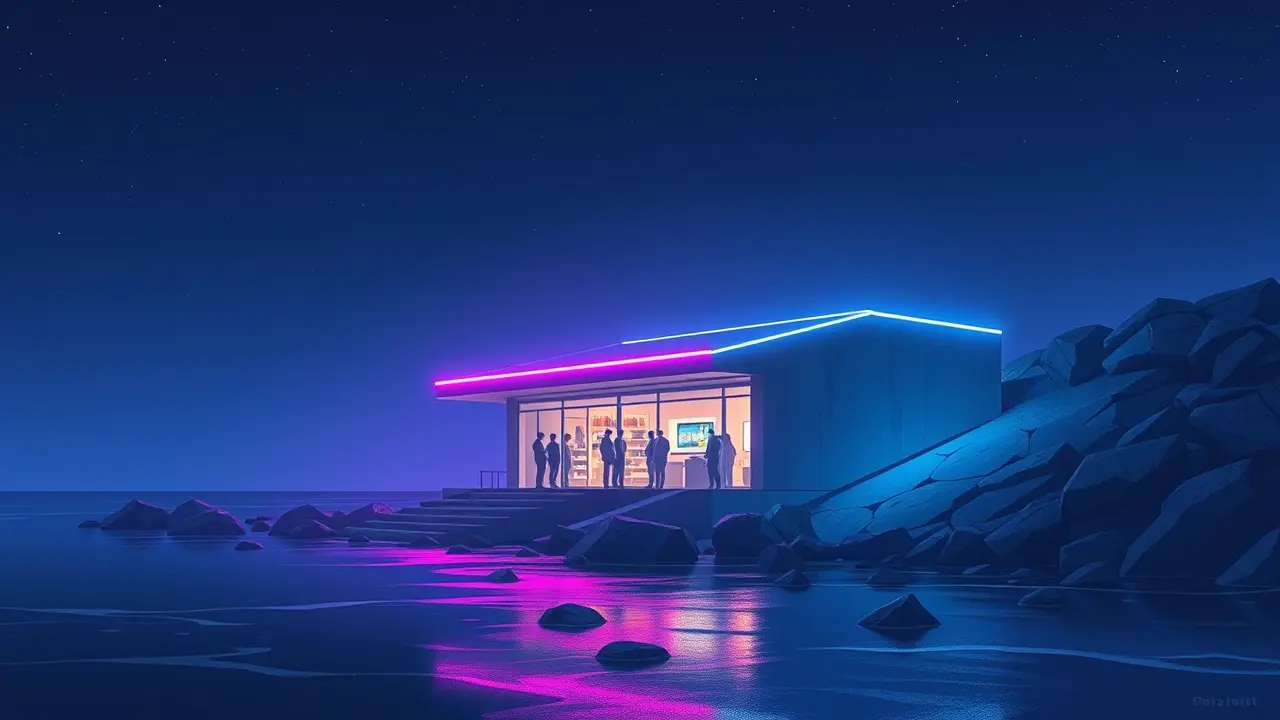
Othertravel & tourismSustainable Tourism
Buried Souvenir Shop on Japanese Shoreline Reflects on Tourism
AN
Andrew Blake
1 day ago7 min read6 comments
Tucked away along the rugged Japanese shoreline, a peculiar structure is causing passersby to do a double-take. It’s a souvenir shop, but not as we know it; the building is partially buried, its roof peeking out from the earth as if the land itself is slowly reclaiming it.This isn't a scene of neglect, but a deliberate architectural installation by Naoshi Kondo in Atami, a seaside resort town known for its hot springs and once-booming tourist trade. The project, quietly taking shape, blurs the line between a place of commerce and a profound commentary on memory, land use, and the very nature of tourism in a post-pandemic world.To understand this, you have to dive into the history of Atami, a place that was the quintessential Japanese holiday destination during the economic bubble of the 1970s and 80s, its beaches and ryokans teeming with visitors. Then, as the bubble burst and travel habits globalized, the town faced a slow decline, its many souvenir shops—once vibrant hubs selling local crafts and omiyage—now standing as quiet reminders of a busier past.Kondo’s buried shop speaks directly to this history; it’s a physical metaphor for how memories and commercial enterprises can become sedimented into the landscape itself, a layer of cultural geology waiting to be interpreted. The design choice forces a confrontation: is this a building emerging from the ground, or is it being consumed by it? This ambiguity is its genius, challenging our perceptions of permanence in an industry built on fleeting visits and disposable income.Experts in landscape architecture and urban sociology see this as part of a broader movement, where architects are moving beyond pure form to create ‘narrative spaces’ that tell a story about their context. Dr.Kenji Tanaka, a cultural historian at Kyoto University, notes that such interventions are particularly potent in Japan, where concepts of mono no aware—the pathos of things, a gentle sadness at their transience—and the constant negotiation with limited land are deeply ingrained in the national psyche. He suggests the buried shop acts as a memento mori for a certain type of mass tourism, asking us to consider what we leave behind, not just in terms of physical trash, but in the cultural and architectural footprints we imprint.The consequences of this artistic statement ripple outward, posing critical questions for local policymakers and community leaders. Does preserving the past mean building museums, or does it mean allowing art to reframe decay and change? For Atami, which still grapples with balancing its tourist economy with its authentic identity, the installation becomes a catalyst for conversation, a piece of land art that is as much a destination as any traditional attraction.It invites a slower, more contemplative form of tourism, one that values reflection over consumption. Looking globally, one can find parallels in projects like Robert Smithson’s 'Spiral Jetty' or the submerged sculptures of Jason deCaires Taylor, but Kondo’s work is uniquely situated at the intersection of commercial space and artistic critique.It doesn’t just exist in a gallery; it exists in the real world, on a real shoreline, potentially selling real souvenirs, thus constantly challenging its own premise. The broader context here is the global reassessment of travel—is the future of tourism about ever-grander resorts and louder attractions, or is there room for quiet, thought-provoking spaces that ask us to consider our relationship with the places we visit? This single, half-concealed building on the Japanese coast, therefore, is far more than an architectural curiosity; it is a silent, powerful essay on time, memory, and the land that holds both.
#architecture
#tourism
#Japan
#installation art
#land use
#memory
#featured
Stay Informed. Act Smarter.
Get weekly highlights, major headlines, and expert insights — then put your knowledge to work in our live prediction markets.
© 2025 Outpoll Service LTD. All rights reserved.